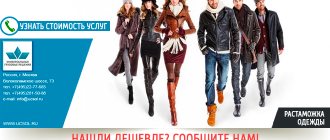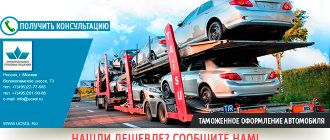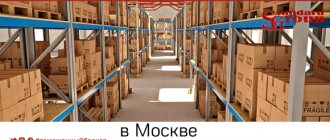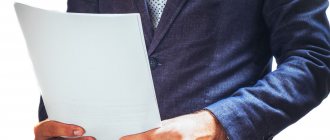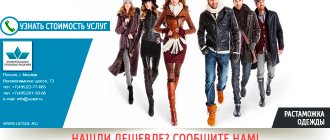Customs clearance of furniture today is a very popular service, since the quality of European furniture still helps it maintain its popularity among consumers, and China is gradually taking a leading position in the production of furniture around the world - the world's production centers for furniture and interior items are located in its provinces .
The range of furniture produced in China is incredibly wide. All possible kitchen sets, upholstered furniture, furniture for children's rooms, bedroom furniture, office furniture and much more are produced there. Chinese craftsmen have not only learned to skillfully copy furniture from German, Italian, French and other countries, but are also developing their brands, inviting European designers to create exclusive collections. Now everyone can appreciate the beauty and quality of furniture made in China. Often, when importing furniture into a country, customs clearance of furniture is required.
Furniture of a wide variety of styles and trends is produced in China. This includes furniture made of solid wood, in the Rococo or Baroque style, in the high-tech style, in the style of French Provence and other styles that will undoubtedly highlight your taste and fill your home with warmth and comfort.
Today, there are many furniture factories operating in China, both Chinese and leading European manufacturers. Many global furniture manufacturers have their production facilities in China. Furniture made in China will help not only bring your design ideas to life, but also save a large amount of money.
Customs clearance of furniture from China is the choice of those who value quality, naturalness and environmental friendliness of materials. In addition, Chinese furniture is a stylish solution for your interior.
Do you need furniture delivered from China? Our company will help you with this. To do this, you just need to call us. Our specialists will help you resolve any issues related to the transportation of furniture, and will also help you with customs clearance of furniture.
Documents and information for customs clearance of furniture at customs
- List of documents for registration of an individual at customs (View)
- List of documents for registration of a Legal entity at customs (View)
- List of documents for registration of an individual entrepreneur at customs (View)
- List of documents for customs clearance “Import” (View)
- List of documents for customs clearance “Export” (View)
Product specifics
Imported furniture attracts buyers with higher quality, exquisite design and cost. Even taking into account customs duties, such a purchase is profitable.
ATTENTION! We work only with legal entities.
Furniture made in Europe is traditionally popular:
- Italy;
- France;
- Germany;
- Poland.
For example, furniture from Italy is often made from high-quality wood, wear-resistant fillers and durable upholstery materials. The production facilities are equipped with the latest technologies, and the quality of products is controlled at every stage of manufacturing and assembly. This is luxury furniture.
Polish-made furniture has more affordable prices. But the design and execution also remain top-notch.
Special mention should be made about furniture from China. Products from Chinese factories are already taking first place in sales. It produces furniture for the kitchen, children's rooms, bedrooms, office and upholstered furniture. The production facilities of some of the world's furniture brands are located in China. Manufacturers copy products from famous labels in France, Italy, Germany and develop their own brands, collections for which are created by invited European designers. Styles and trends are numerous, and the assortment will satisfy any buyer.
It is easier to import furniture through Kazakhstan and Belarus, because the requirements for customs clearance here are less stringent and duty rates are lower. There will be no need to clear customs for furniture when importing it into the Russian Federation, because both Kazakhstan and Belarus are members of the EAEU.
Analytical report. Average contract prices. Risks in customs
| # | Country of origin | Cost $ | Cost p | Net kg | Share | 1 kg $ | |
| 1 | China (CN) | $ 15 771 411 | 32.6% | p 1 218 234 278 | 4 565 218.740 | 44.3% | 3.45 |
| 2 | Korea, Republic of (KR) | $ 7 329 709 | 15.15% | p 564 761 627 | 1 419 680.030 | 13.78% | 5.16 |
| 3 | Italy (IT) | $ 2 755 897 | 5.7% | p 212 023 271 | 259 126.400 | 2.51% | 10.64 |
| 4 | USA (US) | $ 2 587 523 | 5.35% | p 199 613 932 | 135 509.840 | 1.31% | 19.09 |
| 5 | Germany (DE) | $ 2 521 203 | 5.21% | p 193 881 713 | 293 151.160 | 2.84% | 8.60 |
| 6 | Poland (PL) | $ 2 138 324 | 4.42% | p 165 071 685 | 514 843.160 | 5% | 4.15 |
| 7 | Slovakia (SK) | $ 1 878 685 | 3.88% | p 144 780 240 | 380 866.270 | 3.7% | 4.93 |
| 8 | Ukraine (UA) | $ 1 630 560 | 3.37% | p 127 043 777 | 727 328.260 | 7.06% | 2.24 |
| 9 | Türkiye (TR) | $ 1 426 839 | 2.95% | p 109 709 161 | 241 255.990 | 2.34% | 5.91 |
| 10 | Japan (JP) | $ 1 402 741 | 2.9% | p 108 925 643 | 159 534.850 | 1.55% | 8.79 |
| 11 | Vietnam (VN) | $ 1 232 841 | 2.55% | p 95 935 153 | 349 698.650 | 3.39% | 3.53 |
| 12 | France (FR) | $ 959 227 | 1.98% | p 73 685 932 | 40 309.240 | 0.39% | 23.80 |
| 13 | Country not specified | $ 930 741 | 1.92% | p 72 071 293 | 202 087.270 | 1.96% | 4.61 |
| 14 | Great Britain (GB) | $ 763 250 | 1.58% | p 57 724 551 | 47 191.470 | 0.46% | 16.17 |
| 15 | Malaysia (MY) | $ 542 106 | 1.12% | p 41 780 689 | 182 799.290 | 1.77% | 2.97 |
| 16 | Czech Republic (CZ) | $ 516 253 | 1.07% | p 39 800 849 | 130 413.810 | 1.27% | 3.96 |
| 17 | Portugal (PT) | $ 440 202 | 0.91% | p 34 202 977 | 68 037.070 | 0.66% | 6.47 |
| 18 | Spain (ES) | $ 392 310 | 0.81% | p 30 014 767 | 45 159.840 | 0.44% | 8.69 |
| 19 | Romania (RO) | $ 384 922 | 0.8% | p 29 719 599 | 90 237.790 | 0.88% | 4.27 |
| 20 | Netherlands (NL) | $ 372 569 | 0.77% | p 28 934 459 | 39 100.770 | 0.38% | 9.53 |
| 21 | Indonesia (ID) | $ 284 842 | 0.59% | p 22 174 178 | 49 316.030 | 0.48% | 5.78 |
| 22 | Taiwan (China) (TW) | $ 264 539 | 0.55% | p 20 378 825 | 74 679.360 | 0.72% | 3.54 |
| 23 | EU | $ 162 742 | 0.34% | p 12 541 277 | 18 777.350 | 0.18% | 8.67 |
| 24 | Bulgaria (BG) | $ 161 343 | 0.33% | p 12 515 557 | 54 856.310 | 0.53% | 2.94 |
| 25 | India (IN) | $ 142 052 | 0.29% | p 10 832 245 | 23 767.640 | 0.23% | 5.98 |
| 26 | Finland (FI) | $ 134 383 | 0.28% | p 10 424 570 | 13 510.450 | 0.13% | 9.95 |
| 27 | Sweden (SE) | $ 133 525 | 0.28% | p 10 151 163 | 7 408.030 | 0.07% | 18.02 |
| 28 | Morocco (MA) | $ 103 923 | 0.21% | p 8 171 632 | 2 990.390 | 0.03% | 34.75 |
| 29 | Bosnia and Herzegovina (BA) | $ 103 638 | 0.21% | p 7 964 538 | 29 636.220 | 0.29% | 3.50 |
| 30 | Slovenia (SI) | $ 99 836 | 0.21% | p 7 718 060 | 22 043.280 | 0.21% | 4.53 |
| 31 | Belgium (BE) | $ 86 788 | 0.18% | p 6 688 124 | 7 731.230 | 0.08% | 11.23 |
| 32 | Lithuania (LT) | $ 86 040 | 0.18% | p 6 650 658 | 17 471.340 | 0.17% | 4.92 |
| 33 | Moldova, Republic of (MD) | $ 83 540 | 0.17% | p 6 430 364 | 6 284.420 | 0.06% | 13.29 |
| 34 | Hungary (HU) | $ 82 951 | 0.17% | p 6 343 767 | 17 994.120 | 0.17% | 4.61 |
| 35 | Austria (AT) | $ 67 146 | 0.14% | p 5 136 045 | 4 574.720 | 0.04% | 14.68 |
| 36 | Thailand (TH) | $ 64 809 | 0.13% | p 5 062 758 | 26 044.780 | 0.25% | 2.49 |
| 37 | Denmark (DK) | $ 63 885 | 0.13% | p 4 964 290 | 1 006.020 | 0.01% | 63.50 |
| 38 | Mexico (MX) | $ 62 959 | 0.13% | p 4 838 663 | 9 060.430 | 0.09% | 6.95 |
| 39 | Serbia (RS) | $ 55 092 | 0.11% | p 4 253 009 | 7 549.000 | 0.07% | 7.30 |
| 40 | Estonia (EE) | $ 43 950 | 0.09% | p 3 356 161 | 6 071.680 | 0.06% | 7.24 |
| 41 | Tunisia (TN) | $ 37 957 | 0.08% | p 2 931 474 | 2 748.190 | 0.03% | 13.81 |
| 42 | Canada (CA) | $ 18 643 | 0.04% | p 1 448 576 | 444.170 | 0% | 41.97 |
| 43 | Latvia (LV) | $ 15 795 | 0.03% | p 1 196 751 | 5 245.140 | 0.05% | 3.01 |
| 44 | Israel (IL) | $ 10 236 | 0.02% | p 771 846 | 2 324.400 | 0.02% | 4.40 |
| 45 | Australia (AU) | $ 10 155 | 0.02% | p 782 250 | 260.290 | 0% | 39.01 |
| 46 | San Marino (SM) | $ 8 602 | 0.02% | p 653 345 | 273.100 | 0% | 31.50 |
| 47 | Norway (NO) | $ 2 778 | 0.01% | p 219 663 | 70.000 | 0% | 39.69 |
| 48 | Philippines (PH) | $ 2 640 | 0.01% | p 200 400 | 327.500 | 0% | 8.06 |
| 49 | Switzerland (CH) | $ 2 521 | 0.01% | p 189 328 | 199.700 | 0% | 12.63 |
| 50 | Ireland (IE) | $ 2 486 | 0.01% | p 186,698 | 520.000 | 0.01% | 4.78 |
| 51 | Republic of Macedonia (MK) | $ 2 167 | 0% | p 166 905 | 335.600 | 0% | 6.46 |
| 52 | Hong Kong (HK) | $ 1 347 | 0% | p 104 980 | 89.240 | 0% | 15.10 |
| 54 | Russia (RU) | $ 454 | 0% | p 35 310 | 66.050 | 0% | 6.87 |
| 55 | Croatia (HR) | $ 444 | 0% | p 34 464 | 2.530 | 0% | 175.30 |
| 56 | South Africa (ZA) | $ 366 | 0% | p 28 931 | 18.040 | 0% | 20.31 |
| 57 | Azerbaijan (AZ) | $ 337 | 0% | p 25 728 | 238.500 | 0% | 1.41 |
| 58 | Bangladesh (BD) | $ 101 | 0% | p 7 951 | 21.600 | 0% | 4.66 |
| 59 | Luxembourg (LU) | $ 100 | 0% | p 7 757 | 0.130 | 0% | 767.15 |
Stages of customs clearance
Customs clearance is a set of procedures aimed at legalizing cargo, the result of which is the release of goods for free circulation and use. Customs clearance of commercial shipments, and in some cases, cargo for personal use, is accompanied by filling out a declaration, paying customs duties and other mandatory payments.
Typically the process looks like this:
- The cargo arrives at the customs post along with accompanying documents and is placed in a temporary storage warehouse for the duration of customs clearance.
- At this time, a customs declaration is submitted and registered.
- It is required to classify the cargo according to the Commodity Nomenclature of Foreign Economic Activity, determine the customs value, and calculate the amount of payments.
- Then payments are made.
- The customs inspector checks the documents to see if duties, VAT, etc. have been paid, and compares the customs value with the entry fee.
- Further, if any discrepancies or suspicions are found (or as a random check), the cargo and vehicle are inspected.
- The cargo is declared and released.
This completes the customs clearance procedure, and the goods can be picked up from the temporary storage warehouse.
An example of calculating customs duties for customs clearance of cosmetics
Let's look at a simple example of calculating customs duties. The recipient is a legal entity that imports a batch of MAC lip makeup products into the territory of the Russian Federation. The calculation is carried out within the framework of the IM-40 regime (Release for domestic consumption). The customs cost of the shipment including delivery to the border is 12,000 Euro.
According to the HS code 3304 10 000 0, the duty rate is 6.5%, VAT 20%, and not subject to excise tax.
Customs payments are calculated from the customs value according to the following formula:
Customs value (hereinafter referred to as CV) = the cost of the goods under the contract + the cost of transporting the goods to the border with Russia (transportation within Russia is not taken into account).
The Euro exchange rate on the date of filing the declaration is 78 rubles TC = 12,000 Euro * 78 = 936,000 rubles. Duty rate 6.5% = 60,840 rubles.
VAT = 20% of the vehicle + customs duty
VAT = (936,000 + 60,840) * 20 / 100 = 199,368 rub.
At customs, a fixed customs duty is paid, which has its own calculation formula:
| TS of goods | Customs duty amount |
| does not exceed 200 thousand rubles inclusive | 500 rubles |
| From 200,000 rubles 1 kopeck or more, but does not exceed 450,000 rubles inclusive | 1,000 rubles |
| From 450,000 rubles 1 kopeck or more, but does not exceed 1,200,000 rubles inclusive | 2,000 rubles |
| From 1,200,000 rubles 1 kopeck or more, but does not exceed 2,500,000 rubles inclusive | 5,500 rubles |
| From 2,500,000 rubles 1 kopeck or more, but does not exceed 5,000,000 rubles inclusive | 7,500 rubles |
| From 5,000,000 rubles 1 kopeck or more, but does not exceed 10,000,000 rubles inclusive | 20,000 rubles |
| From 10,000,000 rubles 1 kopeck or more | 30,000 rubles |
Customs payments = VAT + Customs duties + Customs duties
Total payable = 199,368 (VAT) + 60,840 (Duty) + 2,000 (Fee) = 262,208 rubles
The given results of calculation of customs duties are for informational purposes only and are not final. The actual amount may differ depending on the country of origin, HS code, exchange rate and other economic and political factors.
Entrust the calculations to professionals!
Contact us in any convenient way, and TAISU-TB specialists will advise and calculate customs duties free of charge, taking into account all the features of your cargo.
Get an offer
Features of customs clearance
Classifying furniture according to the Commodity Nomenclature of Foreign Economic Activity can cause difficulties for an unprepared declarant, but this must be done correctly, since the amount of customs duty depends on the chosen item. The general product group, which includes all types of furniture, is 94. Within the product group, furniture is classified taking into account its purpose, materials of manufacture, and configuration:
- 9401 – furniture for medical purposes;
- 9402 – furniture on which you can sit, for example, chairs, beds, sofas;
- 9403 – other types of furniture not related to the above.
Furniture can be made of wood, metal, plastic, leather.
Note! The amount of duty on many items is determined based on the weight of the unit of product being cleared through customs.
The required package of documents for customs clearance of furniture includes:
- customs declaration, which indicates the declared value;
- foreign trade participant card;
- invoice or invoice;
- shipping documents;
- photo of each item;
- declaration of conformity;
- certificate of origin.
Important! If the brand is included in the register of intellectual property, then in order to clear the product through customs, you need to attach an authorization letter from the manufacturer to the package of documents, otherwise the cargo will not be allowed through.
Features of customs clearance of furniture for a legal entity or individual entrepreneur are as follows:
- the customs value is usually adjusted;
- multiply the cost per kg by weight;
- calculate the duty;
- add a duty to the cost;
- VAT is calculated on the amount received.
There are also nuances regarding the composition of the package of documents if the furniture is cleared through customs to an individual. In this case, papers confirming ownership of any real estate are required. In fact, it is the address where the property is located that should be the final destination for furniture delivery. You need a plan of the room where the furniture will be located, indicating the area, i.e. it is necessary to prove that all pieces of furniture can be placed there, and the products are not imported for commercial purposes. But you don’t need certificates, the registration of which also costs money. The cost of the goods will be confirmed by commercial documentation. All data in documents that fall into the hands of a customs inspector must correspond to real data.
Problems may arise due to incorrect labeling. It must comply with EAC standards. The labeling indicates:
- information about the manufacturer and importer (name, addresses, contact details);
- Name of product;
- manufacturing materials;
- storage conditions;
- EAC sign.
The cargo will definitely not be allowed through without appropriate resolution of the problem if:
- the number of products indicated in the documents does not coincide with the real one;
- customs value is reduced;
- the HS code is incorrectly selected;
- There is no purchase and sale agreement.
The customs clearance procedure, if all documents are completed correctly, usually does not take more than a day. If you have doubts about the correctness of filling out the documents, contact a customs broker; he will take care of everything, and knowledge and experience will allow you to avoid mistakes.
Customs brokerage services for clearance of cosmetics (cosmetic products)
We provide the services of a customs broker - a customs representative for prompt clearance of “customs clearance” when importing into Russia or “customs clearance” when exporting from Russia any cosmetics or cosmetic products. These services are provided on the basis of a brokerage agreement and we bear full legal responsibility to you and customs. We carry out customs clearance of cosmetics in Russia in any cities and regions of the Russian Federation. Do you need a customs broker? We will be happy to become your reliable partner at customs!
Certification
Furniture made from low-quality materials can be harmful to human health, so each product must be comprehensively tested and certified. Phytosanitary, veterinary, epidemiological and radiation control are carried out in accordance with the established procedure. The certificate of conformity confirms that the furniture meets the requirements and is safe. If violations are discovered during the certification process, the furniture is subject to confiscation.
During the testing process, they are guided by the technical regulations TR CU 025/2012 “On the safety of furniture products.” The types of products that are tested according to this regulation are listed in Appendix 1 to TR CU 025/2012. These do not include:
- furniture for medical purposes;
- antiques;
- used and refurbished items;
- exhibition and advertising samples;
- products intended for use in vehicles.
In the form of certification, the quality and safety of children's and student furniture is assessed. Products for household use and for public premises are declared. The full list is specified in the Decision of the Board of the Eurasian Economic Commission No. 44 of March 18, 2014.
Certification is carried out according to the following schemes:
- for mass-produced products – 1C, 2C;
- per batch – 3C.
Declaration is made according to the following schemes:
- for serially produced products – 1d, 3d, 6d;
- per batch – 2d, 4d.
To issue a document confirming compliance with technical regulations, present:
- application;
- technical description;
- certificates and test reports for individual furniture elements;
- shipping documents;
- Contract;
- GOST or TU;
- type unit test report;
- certificates of the country of origin;
- management system certificate.
Commodity Nomenclature of Foreign Economic Activity, types and calculation of duties
For customs clearance of products, it is necessary to determine the HS code, calculate customs duties and make payments.
There may be some difficulties with importing bearings. This is due to the current Decision of the EEC Board No. 139 dated August 21, 2018, establishing an anti-dumping duty for rolling bearings whose country of origin is China.
Anti-dumping duty is a measure to protect the domestic market. It is paid during customs clearance along with import duties. Unlike a regular duty, its amount is not taken into account when calculating VAT.
The above means that if the product code matches the code specified in the Decision, there is a risk, and customs requests a certificate of origin of the goods, even if the invoice states another country of import, not China. The fact is that the country of import and the country of origin are not the same thing. Bearings made in China can be imported from any country.
According to the Decision of the Council of the Eurasian Economic Commission dated July 13, 2018 No. 49, which entered into force on January 12, 2021, it is necessary to confirm the origin of goods for the legal application of customs tariff regulation measures. Paragraph 25 of the Decision states that the document confirming the origin of the goods is a declaration or certificate of origin.
The original certificate is presented to customs.
The process of obtaining a certificate of origin is quite long and increases the time of customs clearance. You can receive the certificate by mail or with a driver. If the certificate of origin has not been prepared in advance and it takes time to obtain it, and the cargo needs to be cleared through customs promptly, the bearings can be released against security. You are given 10 days to pay the security. A duty of 41.5% is debited from the anti-dumping payment, and after 2 months, if a certificate of origin is not provided, the funds are debited completely. Security for anti-dumping duty, as well as other types of customs payments, is deposited into a single personal account of the Federal Customs Service of Russia.
If it is not possible to obtain a certificate of origin for one reason or another. then you can relieve yourself of this obligation by indicating that the country of origin of the goods is not determined, i.e. In column 34, enter “00”, but in this case an anti-dumping duty of 41.5% will be charged.
The anti-dumping duty applies to bearings that are classified in the Commodity Nomenclature of Foreign Economic Activity under the codes:
- 8482101001;
- 8482101002;
- 8482101009;
- 8482109001;
- 8482109002;
- 8482109003;
- 8482109008;
- 8482200001;
- 8482200002;
- 8482200009;
- 8482300001;
- 8482300009;
- 8482500001;
- 8482500002;
- 8482500009;
- 8482800001;
- 8482800002;
- 8482800009;
- 8482911000;
- 8482919000;
- 8482990000.
Sometimes you can avoid requesting a certificate of origin by performing a pre-filing inspection, recording the label indicating the manufacturer and country of origin, and then attaching this document to the declaration.
Transportation Features
Furniture is often a large cargo, so there are known problems during loading/unloading and transportation. If furniture is ordered from Europe or China, the most preferred delivery method is by road. The products are loaded into a Eurotruck and secured. It will be reliably protected from precipitation and damage. This is one of the fastest and most convenient methods of transportation. For these purposes, a specially equipped transport vehicle is chosen - a furniture carrier. It is equipped with various options for fixing devices and soft rollers. Loaders must undergo special training.
Before loading, if possible, remove the fittings and put them in bags, having previously marked them. Antiques are usually not dismantled. Glass elements and mirrors are packed especially carefully. The packaging is selected according to the type of furniture. It is important that it protects the product, and at the same time ensures safety for others. The following materials are used for packaging: stretch film, corrugated cardboard, polystyrene foam, paper, bubble film, fabric.
Features of importing bearings
The following countries are importers of bearings:
- China;
- Japan;
- USA;
- Great Britain;
- Germany;
- Poland;
- Canada;
- Belgium;
- Austria;
- France;
- Sweden;
- Netherlands.
Some bearings are imported as complex parts and are therefore not taken into account in statistics.
In recent years, starting in 2021, the volume of imports from Southeast Asian countries has increased sharply. For the most part, these products are of low quality, but at the same time inexpensive, so they are in demand. Some part, and quite a large one, of bearings is imported illegally. This poses a danger to the domestic engineering industry. The anti-dumping duty was introduced in 2013 to protect the Russian manufacturer.
The greatest demand is for ball bearings, which are installed in electric motors, pumps, machine tools, and household appliances. This is about 40% of total consumption. 32% falls on the share of tapered roller bearings, which are used in hubs, mechanical transmissions and others. A smaller, but significant, share is occupied by cylindrical roller bearings used in electric motors of pumps and gearboxes.
As for the total share of imports, in 2021 about 65% of products were imported to the Russian Federation. This is explained by the fact that there are quite a lot of factories in Russia that use foreign components, as well as attractive prices for products from Southeast Asia.
In terms of imports, a rather difficult situation has developed regarding the danger of filling the Russian market with counterfeit products not only from China, but also from other countries where bearings are not produced - Latvia, Lithuania, Malaysia. These counterfeit products are often sold under the guise of domestically produced products, so they can participate in government procurement and often win government tenders, since price is largely a decisive factor. This situation provokes a decline in its own production capacity. In particular, the Samara Bearing Plant was closed in 2021. The rolling bearings market is projected to grow slightly in 2020–2021.
SB Cargo services
To significantly speed up the organization of transportation and customs clearance of furniture, we suggest seeking help from a customs representative of SB Cargo. He will prepare the necessary documents, control the placement of goods on the temporary storage warehouse, help obtain certificates and declarations of conformity, select the HS code, and calculate all payments in advance.
Our specialists are highly qualified and licensed to perform all types of work related to organizing transportation and customs clearance. Competence and connections in the customs structure make prompt customs clearance possible. Contact us by phone or email. We answer any questions you may have regarding foreign trade activities. Consultations are provided free of charge.
What will you get by contacting a customs broker "Consult Group"
- Accurate calculation of all upcoming payments, taxes, fees and risks, which makes it possible to plan markups on goods;
- Consolidated warehouse for temporary storage and reloading of goods;
- Assistance in obtaining the necessary permits necessary to standardize your product in accordance with the legislation of the Customs Union;
- Assignment of one of our specialists who will delve into the specifics of your delivery;
- The shortest possible time for customs clearance procedures.
- Documents with information, thanks to which you will receive 0% VAT, according to Art. 164 of the Tax Code of the Russian Federation.
By contacting us, you reduce to zero the chances of encountering unexpected expenses at the border.
